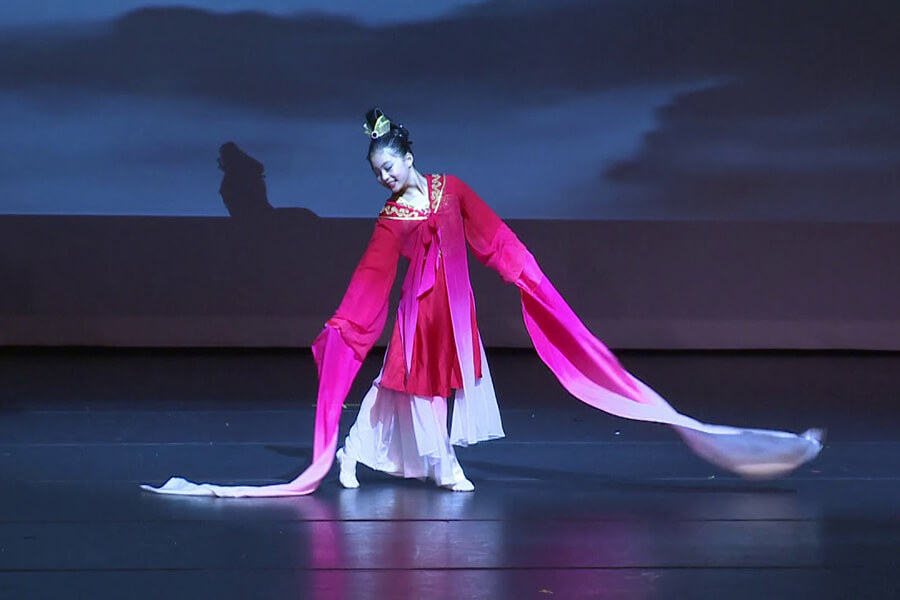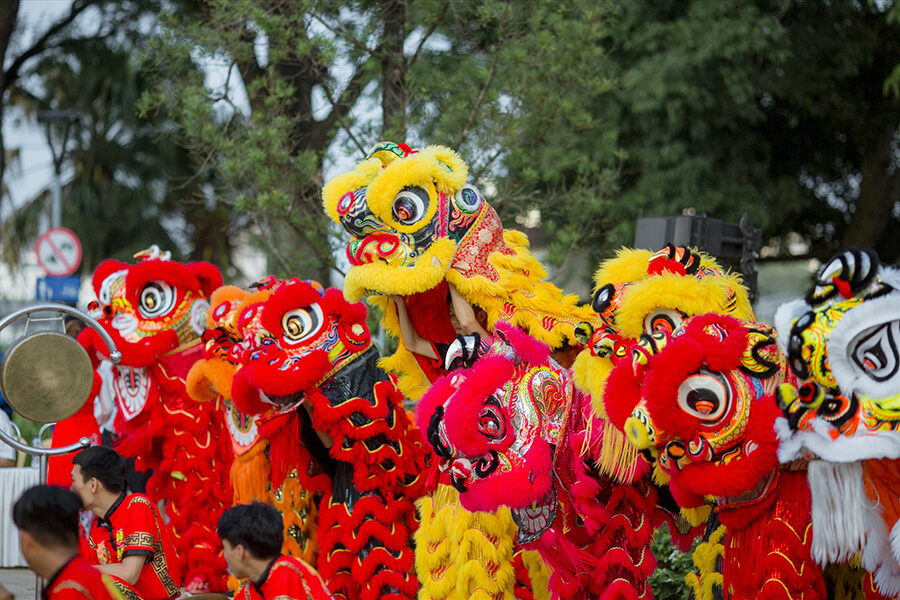Embarking on a journey through the annals of time, the tapestry of Chinese national dance culture unfurls with the grace of a millennia-old performance. Across the canvas of the past 5,000 years, a resplendent display of textual relics and visual vignettes has persisted, casting an unbroken spell over the cultural landscape. This enduring flame, flickering with the essence of tradition, distinguishes itself as a rarity within the grand tapestry of global cultural histories. The resonance of traditional Chinese dance, echoed through the ages, stands as a testament to the profound and timeless artistry woven into the very fabric of this ancient cultural narrative.
What is traditional Chinese dance – the main characteristics?
In the intricate tapestry of Chinese traditional dance, the essence of group dynamics manifests through a trifold prism of creation, performance, and dissemination. This art form, an exquisite fusion of melody, rhythm, and movement, unfurls like a delicate blossom rooted in the soil of folk traditions. Emerging organically from the heartbeat of the people, Chinese traditional dance has evolved over time, embellished with the swift cadence of rapid movements, the elegant synchrony of harmonious steps, and the entrancing pulse of unified rhythm.
This dance form, a symphony of expressive storytelling, weaves together the threads of pleasure, anger, sorrow, and joy. It becomes a living embodiment of the collective emotional release sought by the populace, transcending mere steps and gestures to resonate with the soulful pulse of human experience. In the rhythmic cadence of Chinese traditional dance, one finds not just a performance, but a visceral expression of the people’s emotional yearnings, a harmonious celebration of the myriad shades of life.
Chinese traditional dance history
In the ancient embrace of the Neolithic era, some five or six millennia ago, the rhythmic heartbeat of Chinese culture echoed through the communal dances of a bygone time. As humanity endeavored to carve sustenance and meaning from the world, the very essence of existence found expression in both material and spiritual wealth. Labor, the primordial dance of survival, became the crucible wherein the dance of life unfolded, weaving together the threads of human endeavor.
In the dawn of prehistoric China, dance emerged from the sacred cocoon of religion, with shamanic figures orchestrating intricate rituals that reverberated with divine cadence. It was not mere entertainment; it was a spiritual tapestry interwoven with the solemn notes of a five-stringed instrument known as the Se (瑟) and the haunting melody of bone flutes—an ancient symphony that echoed through the corridors of time.
The Zhou dynasty witnessed the grandeur of Chinese dance, metamorphosing into elaborate rites and majestic royal ceremonies. “Yue Wu,” a dance of cosmic significance, unfolded alongside the enchanting strains of “Ya Yue.” Within this realm, two distinct schools of dance emerged—the grandeur of “Big Dance” and the intimate allure of “Small Dance.” The Han dynasty ushered in an era of refinement, with dance evolving into a form of entertainment, nurtured by professional training and the creation of innovative instruments crafted for the express purpose of movement.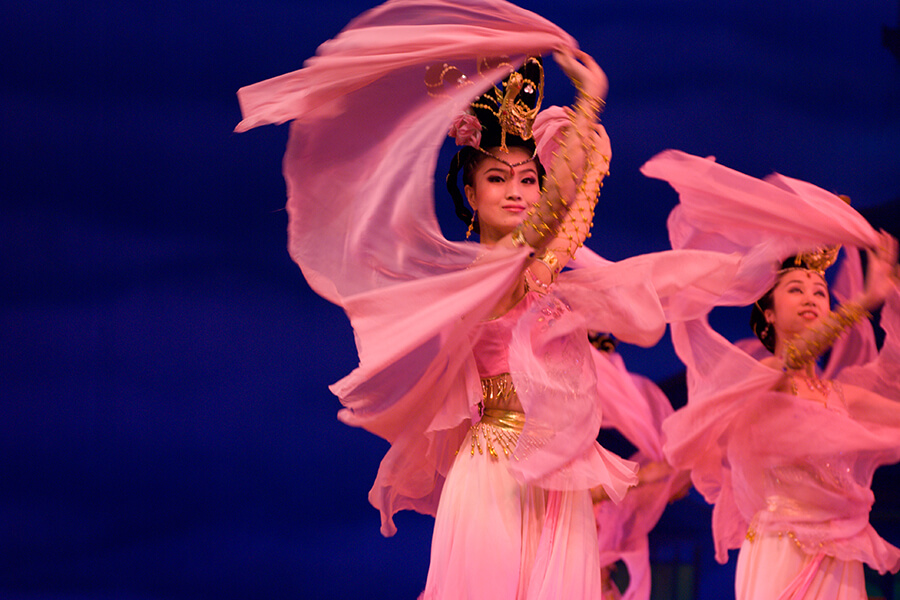
The Tang dynasty, a zenith of artistic expression, melded the essence of the Han dynasty’s “Hundred Performance” with a harmonious fusion of foreign and indigenous influences. Through the kaleidoscopic lens of Xian’s Tang Dynasty Music and Dance performances, one could catch a fleeting glimpse of the resplendent dance forms that adorned this epoch.
As the echoes of the Song dynasty lingered, traditional folk dances emerged as the phoenix rising from the embers of antiquity. Ancient dances, once vibrant and essential, began to fade, giving way to the blooming petals of opera dance during the Yuan dynasty. By the time the Ming and Qing dynasties unfurled their chapters, opera dance had matured into an art form, reaching its zenith as a spectacle of entertainment. In the realms of the Republic of China (ROC) and the People’s Republic of China (PRC), the curtain rose on a new act—the era of musicals, where dance metamorphosed into a popular and enchanting form of entertainment, etching its own chapter into the vibrant saga of Chinese cultural expression.
Chinese traditional dance
Chinese traditional Dragon dance
In the rich tapestry of Chinese cultural identity, the people proudly don the epithet of “descendants of the dragon.” This mythical creature, meticulously crafted by the hands of Chinese ancestors, transcends the realms of folklore to embody the very essence of divine power and auspicious fortune. The dragon, a synthesis of totemic shapes from diverse clans, stands as a testament to the ancient narrative of unity, merging, and integration among the disparate threads of Chinese lineage.
Across the epochs, from the majestic Han and Tang Dynasties to the resplendent Ming and Qing Dynasties, historical records resonate with the presence of dragons. The dragon’s indomitable spirit weaves through the pages of time, its celestial significance marked by rituals such as the venerable dragon dance, a fervent plea to the heavens for the life-giving gift of rain.
In the kaleidoscope of China’s traditional festivities — from the jubilant Chinese New Year to the luminous Lantern Festival — the dragon dances in myriad styles, each a mesmerizing spectacle. The colossal painted dragon, a vibrant masterpiece in motion; the “Baiye dragon,” a floral symphony composed of hundreds of blossoming lotuses; the ethereal “fire dragon,” exhaling incense and breathing fire; and the captivating “human body dragon,” “bench dragon,” “hand dragon,” and more, all dance across the landscape of China, each embodying a unique expression of the dragon’s enduring spirit.
Beyond the mere choreography, the dragon dance transcends to symbolize the very heartbeat of the Chinese national spirit. It is a living canvas where ancient myths entwine with contemporary celebrations, uniting generations in a rhythmic dance that echoes the resilience, unity, and timeless vitality of a people proud to be the descendants of the celestial dragon.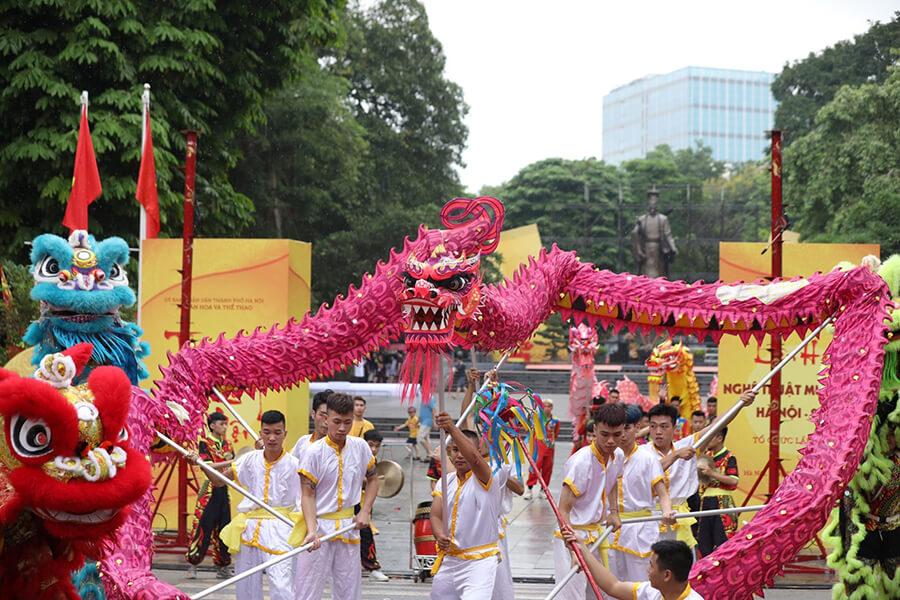
Chinese Traditional Lion Dance
In the vibrant mosaic of traditional Chinese performing arts, the lion dance emerges as a luminous gem, a captivating embodiment of cultural richness often erroneously conflated with its mythical counterpart, the dragon dance. Diverging in both form and essence, the lion dance stands distinct, a dynamic celebration of Chinese heritage.
Unlike its grander cousin, the dragon dance, the lion dance requires the artful coordination of two individuals, their bodies concealed within the sinuous lion’s form. An intricate interplay of movements unfolds, the performers’ faces veiled by the lion’s visage, fostering an air of mystique. In contrast, the dragon dance, a collective endeavor, demands a multitude of participants and reveals the human touch as the dragon gracefully glides upon the poles.
Embedded within the lion dance are fundamental movements echoing the cadence of Chinese martial arts—a rhythmic manifestation of strength and grace. A symphony of fortune weaves through each choreographed step, the lion dances a harbinger of good luck and auspicious beginnings.
The dance unfolds with two or three adept performers, one guiding the lion’s majestic head and another orchestrating the graceful movements of its tail. A third figure, often donning the mask of the “Happy Buddha,” adds a touch of whimsy to the performance, infusing joy into the ritual.
Within the lion dance, two distinctive styles emerge, each a testament to regional nuances. The Chinese Northern dance, resplendent in hues of red, orange, and yellow, boasts a shaggy, golden-headed lion—a spectacle once reserved for imperial courts, replete with daring stunts that enthralled audiences.
On the Southern stage, the lion dance metamorphoses into a symbolic ceremony, a dance imbued with the power to dispel malevolent spirits and beckon the benevolence of luck and fortune. The Southern lion, a kaleidoscope of colors, features a head adorned with large eyes, a mirror on the forehead, and a solitary horn at its center—a visage resonant with ancient symbolism.
As a spiritual safeguard, lion dance costumes are sanctified before each performance, an acknowledgment of the sacred bond between tradition and the divine. In the intricate tapestry of Chinese cultural expression, the lion dance stands as a testament to the vibrant and protective spirit that weaves through the veins of this ancient art form.
Traditional Chinese Ribbon Dance
Embarking on a journey through the annals of Chinese cultural elegance, the traditional ribbon dance unveils itself as a jewel with roots reaching back to the resplendent Tang dynasty of the eighth century. This enchanting art form, attributed to the artistic prowess of Emperor Tang-Ming-Hwon and his consort Yang-Gwei-Fei, stands as a testament to a bygone era where music and dance coalesced in a harmonious celebration of creativity.
Legend weaves a vivid tapestry around Emperor Tang-Ming-Hwon, who, in the ethereal realm of dreams, found himself in a moonlit palace surrounded by celestial fairies adorned in multicolored, cloud-like long robes. Inspired by this celestial vision, the dance of flowing silk ribbons emerged, accompanied by the melodious strains of traditional Chinese instruments such as the Erhu and Pipa. Thus, “The Dance of Nei Chang Yu Yi” came into existence, a choreographic masterpiece echoing a refreshing and poetic ambiance.
This enchanting dance, reminiscent of cranes soaring through the sky, can unfold in various forms—solo, pas de deux, or a collective dance, each iteration adorned with the dancers holding Fanjie (幡节), adorned in feathered dance dresses and emeralds. Akin to a flock of cranes in graceful flight, the performers, with ribbons in hand, breathe life into the intricate choreography, painting a tableau that echoes the reserved grandeur of the Tang Dynasty.
“The Dance of Nei Chang Yu Yi” not only encapsulates the beauty of a bygone era but also serves as a living testament to the enduring legacy of traditional Chinese dance. As the ribbons weave through the air, carrying with them the spirit of centuries past, this dance becomes a timeless ode to artistic expression—a masterpiece that transcends the boundaries of time, embodying the elegance and grace inherent in the rich tapestry of Chinese cultural heritage.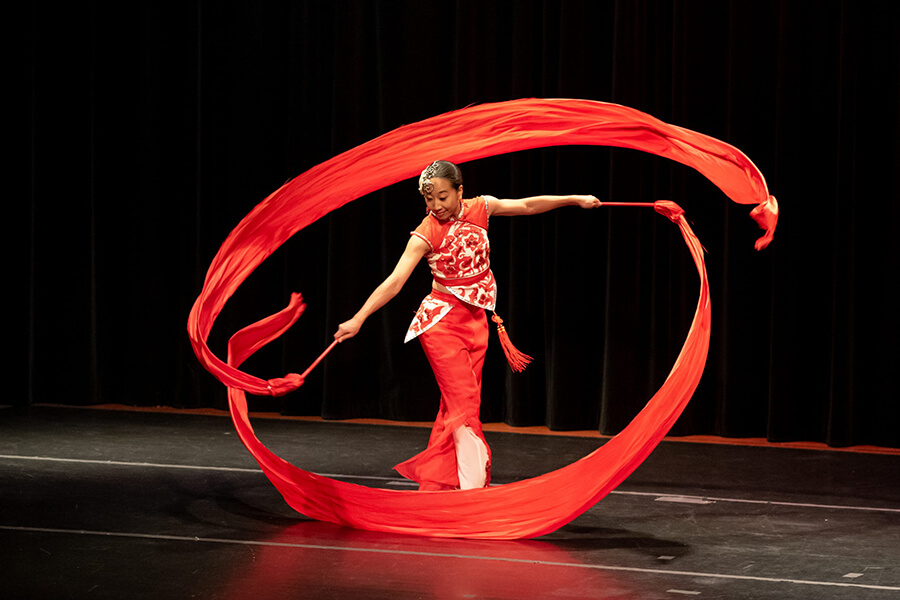
Traditional Chinese Yangko Dance
Step into the enchanting realm of the Yangko dance, a vibrant tapestry woven by the hands of Chinese farmers in the verdant fields of the Song Dynasty. This traditional folk dance, an ode to the agrarian roots of ancient China, unfolds with a rhythm that is both smooth and compact, echoing the jubilant scenes of rural life.
Born from the fertile soil, the Yangko dance originated as a heartfelt offering to the god of farming, a rhythmic prayer for bountiful harvests in a bygone era. Year after year, this dance evolved, absorbing nuances from the melodic cadence of farming songs, the poetic verses of folk melodies, the grace of traditional Kungfu, the acrobatics of the countryside, and the dramatic flair of ancient dramas. Each season brought new layers of richness to the dance, reflecting the pulse of rural life.
As the Yangko dance traversed regions and embraced diverse customs, variations emerged like ripples on a pond. Within this cultural kaleidoscope, three mesmerizing performances took shape: the harmonious duets of song and dance, the earthbound cadence of Yangko performed on the ground, and the elevated spectacle of Yangko performed on stilts.
The very essence of Yangko dance costumes mirrors the kaleidoscopic vibrancy of this ancient art form. A fusion of tradition and theatrical flair, these costumes burst forth in a riot of colors, each thread meticulously woven to echo the vivacity of the performance. Inspired by the opulence of traditional Chinese dance attire, these costumes elevate the Yangko dance into a visual symphony of form and color.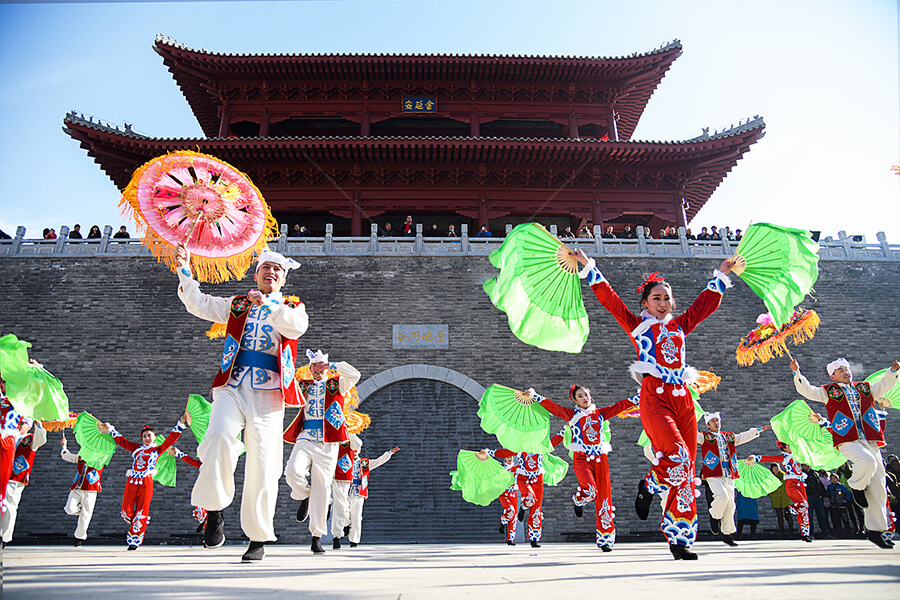
In the rhythmic embrace of the Yangko dance, one glimpses not just a celebration of harvest but a timeless portrayal of the spirit of the land. It is a living canvas, painted with the exuberance of gestures, the vivid language of movement, and a performing style that breathes life into the very essence of rural festivities. As the Yangko dance twirls through the ages, it stands as a testament to the enduring connection between the heart of the farmer and the pulse of the earth.
Traditional Chinese Fan Dance
Enter the enchanting world of fan dance, a graceful tapestry where the fan takes center stage, weaving stories through the delicate movements of its performers. This traditional Chinese folk dance transcends cultural boundaries, with distinctive styles emerging among ethnic groups such as the Han, Hani, and Korean communities, each imprinting their unique essence onto this captivating art form.
In the verdant landscapes of Yunnan Province, the Hani people breathe life into the fan dance, carving two distinct styles – the earthy elegance of brown fan dance and the poignant beauty of paper fan dance. The brown fan dance, an ode to the feminine spirit, unfolds with women gracefully wielding Japanese banana leaf or palm leaf fans, mimicking the life, posture, and dance of the silver pheasant. A dance that resonates with gentleness and solemnity, it serves as a reverent expression of worship for the grandmother of the village god, embodying the Hani people’s aspirations and ideals.
Evoking the cadence of life’s eternal cycle, the paper fan dance emerges as an evolution, primarily performed by men during funerals. This poignant rendition, often enacted in pairs or groups, unfolds with a slow, rhythmic dance that mirrors the fluid movements of birds. In these moments, the dance becomes a poetic dialogue with the passage of time, a poignant reflection on life’s transience.
Journeying to the Korean fan dance, its roots delve into the traditions of witchcraft, blossoming into an expressive performance dance. A mesmerizing spectacle primarily performed by women, the Korean fan dance becomes a canvas for inner joy, each wave of the fan echoing the unique rhythm, emotions, and curvilinear grace intrinsic to the Korean nationality.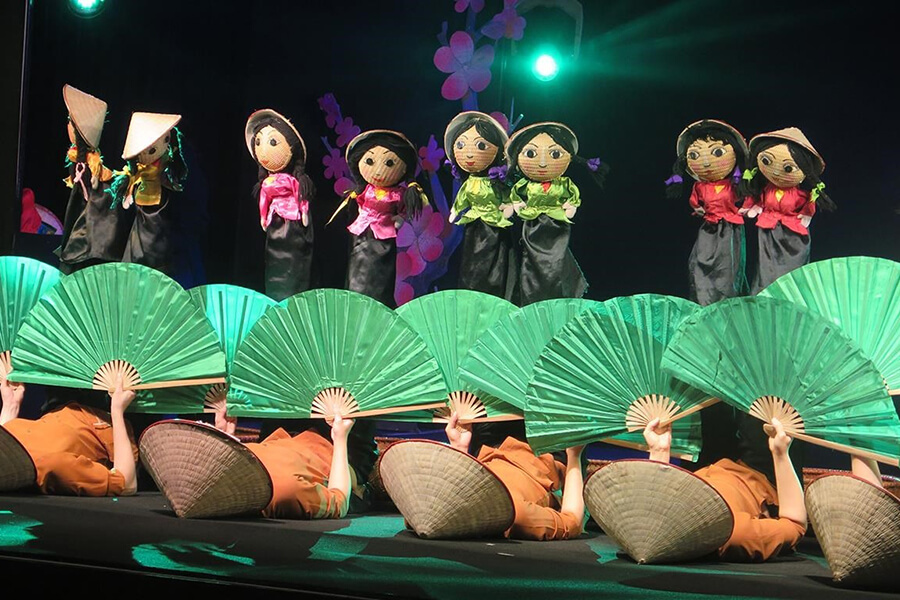
In the realm of fan dance, the fans are not mere props; they become extensions of the dancers’ souls, flickering with the stories of generations, culture, and the undulating rhythms of life. Each dance, whether under the Yunnan sun or amidst the echoes of Korean traditions, etches a unique narrative, a symphony of movement and emotion that transcends time and space.
Traditional Chinese peacock dance
Enter the captivating realm of the peacock dance, an exquisite traditional performance that has unfurled its resplendent plumage in the heartland of the Dai people, weaving its magic through the landscapes of Ruili, Luxi, and Xishuangbanna in Yunnan Province’s Dehong Dai and Jingpo Autonomous Prefecture. Legend whispers tales of Dai leader Zhaoma LiJiesu, who, more than a millennium ago, wove the essence of peacock grace into the art of dance. Across generations, the fluid dance moves evolved under the skilled hands of folk artists, creating the mesmerizing spectacle we now know as the peacock dance.
The dance is a symphony of graceful movements, a testament to the Dai people’s connection with nature’s most resplendent bird. It is in the flexible rise and fall of the knee, the soft and firm articulation of arms, wrists, and fingers, and the speed and agility of calf muscles that the characteristics of the peacock dance unfurl like the iridescent plumage of its avian muse. The dance, a living expression of the Dai culture, demands not only physical dexterity but also a keen eye for the nuanced rhythms of nature.
In this enchanting tradition, one luminary stands as the epitome of peacock dance mastery — Yang Liping. Her transcendent works, “Spirit of the Peacock” and “Love of the Peacock,” are modern renditions that weave the essence of the traditional dance into a contemporary tapestry. While these creations pay homage to the timeless allure of the peacock dance, they carve their own path, diverging in costume and performance to create a fusion of tradition and innovation.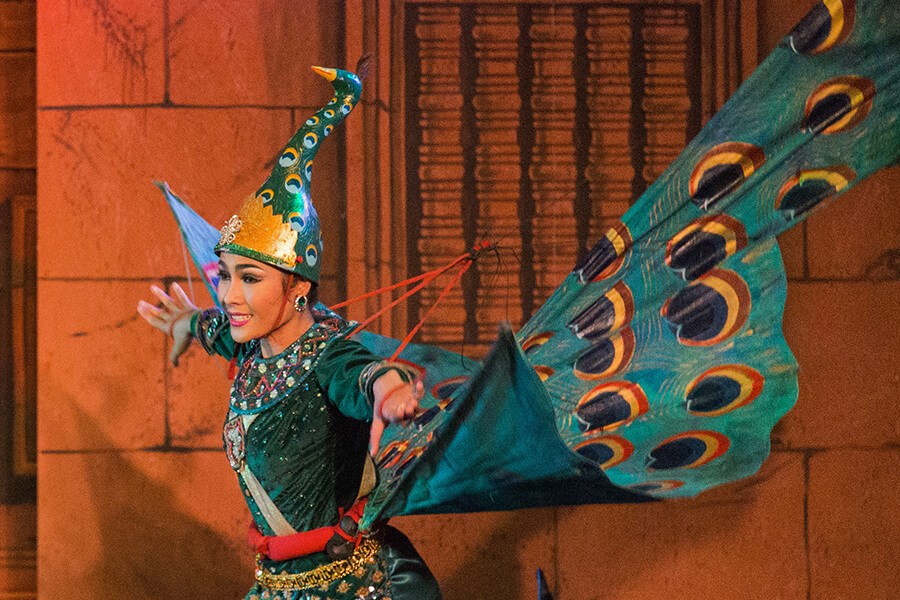
As the peacock dance continues to unfold its wings through time, it remains a celebration of nature’s elegance, Dai heritage, and the timeless allure of a dance that mirrors the captivating beauty of the peacock itself. Each movement is a brushstroke on the canvas of tradition, inviting spectators into a world where legends meet the rhythmic heartbeat of cultural expression.
Chinese traditional long sleeves dance
Embark on a journey into the mesmerizing realm of the Long Sleeves Dance, a captivating spectacle that seamlessly fuses the distinctive traits of Chinese Peking Opera with the fluid grace of dance, crafting a tapestry of unparalleled beauty. Rooted in the ancient traditions of Chinese dance, the Long Sleeves Dance has transcended the epochs, tracing its origins to the cultural tapestry of the Han and Tang dynasties, where it first unfurled its ethereal allure.
Within the sinuous movements of this dance form, a harmonious symphony of body rhyme and swaying postures unfolds, creating a unique choreographic poetry that resonates with a singular verve. The charm of the Long Sleeves Dance lies not only in its opulent visuals but also in the meticulous technique that imbues each gesture with an enchanting grace, inviting spectators into a world where time seems to momentarily stand still.
This artistic endeavor pays homage to the ancient roots of Chinese dance, each movement echoing the timeless rhythm of tradition while seamlessly embracing the expressiveness inherent in Peking Opera. The long sleeves, like extensions of the performer’s soul, add a layer of mystique to the dance, twirling and cascading like silken waterfalls, imbuing the performance with an otherworldly elegance.
In the realm of the Long Sleeves Dance, the stage becomes a canvas where ancient tales are painted with a brush dipped in tradition, and every movement becomes a brushstroke, creating a visual masterpiece that is as enchanting as it is evocative. This dance form, with its roots reaching deep into the rich soil of Chinese heritage, continues to enchant audiences, embodying the timeless beauty that resides at the intersection of opera and dance.